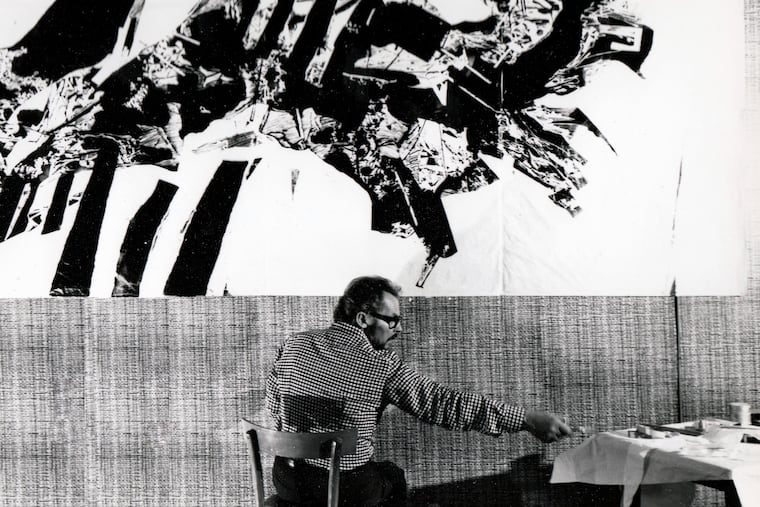Honoring a printmaker who fled Lithuania and had a profound influence on black artists in Philly
Romas Viesulas inspired and encouraged talented students at Temple's Tyler School, including the founder of the Brandywine Workshop.

Romas Viesulas, world-renowned master printmaker, has never exactly been hailed in his adopted home of Philadelphia.
It's not that Viesulas was ignored during his lifetime. When he died suddenly in Rome of a heart attack in 1986, he was a professor of printmaking at Temple University's Tyler School of Art and director of Temple Abroad in Rome.
He had received three fellowships from the Guggenheim Foundation. He represented the United States at the Venice Biennale in 1970. His work is in museum collections around the world (including the Philadelphia Museum of Art).
But Allan L. Edmunds, founder and president of the Brandywine Workshop and Archives, has long felt Viesulas has never been properly recognized here, in the city where he finally settled after fleeing Lithuania ahead of the Nazis and the Russians in the 1940s.
So this year, the centenary of Viesulas' birth, Edmunds has helped put together a yearlong celebration of the man who, he says, "changed my life."
"Romas Viesulas: Master Artist-Printmaker," a survey of the artist's work, is now on view at the Brandywine Workshop, 730-32 S. Broad St. It runs through Dec. 29. (An exhibition of Viesulas' work recently closed at the Lithuanian embassy in Washington, where it served to celebrate the artist and the centennial of modern Lithuania).
Virtues to celebrate
As far as Edmunds is concerned, such recognition has been a long time coming, and the virtues it celebrates are in short supply these days.
"In a global society, we're all citizens of the world, but we all are looking at our differences," Edmunds said. "I came to Tyler in '67. He was a teacher, and I fell in love with printmaking. He was very encouraging of everything I did. I would not be a printmaker were it not for Romas."
Artist John Dowell, whose manipulated photographs exploring cotton are currently on view at the African American Museum in Philadelphia, studied with Viesulas at Tyler in the 1960s.
"There was complete acceptance of me by Romas," Dowell said.
>> READ MORE: Artist John Dowell exposes cotton's terrible beauty at the African American Museum in Philadelphia
Significantly, Viesulas helped pave the way for Dowell to become the second person to earn a printmaking residence and certificate from the famed Tamarind Lithography Workshop in Los Angeles (and the first African America to do so). In 1970, on Viesulas' recommendation, Dowell became the first African American to become printmaker-in-residence at the Venice Biennale.
"I had never been out of the country before!" said Dowell, who grew up in the Richard Allen homes of North Philadelphia.
It's not that Romas sought out young African American artists. He sought out talent and embraced it, Dowell and Edmunds agreed. He was an immigrant, devoid of ethnic and racial prejudice and sympathetic to excellence.
"He was very, very, very encouraging," Dowell recalled. "Who you were was irrelevant. If the work was good, it was good. If the work was bad, it was bad."
Viesulas arrived in Philadelphia at a low point in his life. He had escaped from Europe and eventually made his way here, initially as a temporary replacement at Tyler. But the teacher he replaced never returned and Viesulas stayed on, becoming chair of the printmaking department.
In his work and in his life, he dismissed the superficial.
"The human drama, the human condition — that element has always permeated my art, and in my life I have completed only a couple of complete abstractions," Viesulas said in an interview in the 1970s.
"It's interesting that behind my work there's always some human concern. As an artist, I can function only this way. I cannot perceive unless there is something in human terms that bothers me, nags me, or depresses me. The reaction or comment to this has probably been the motor which has driven me the last 20 years."